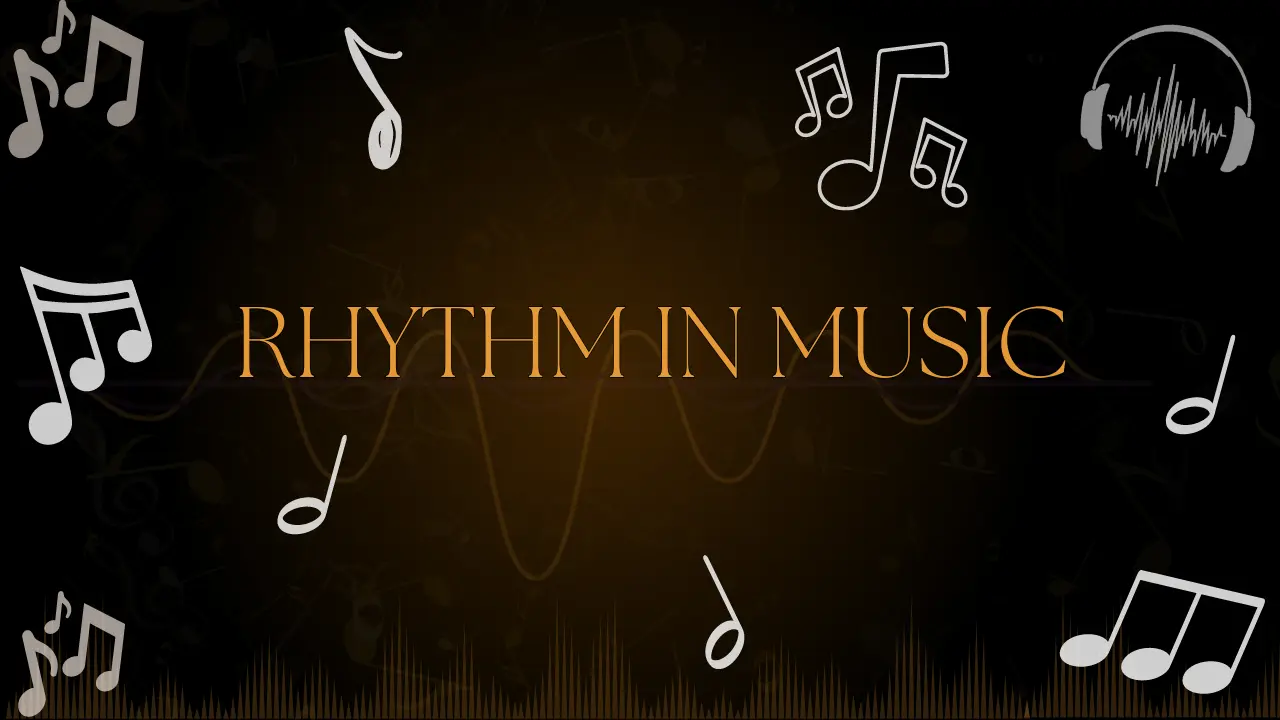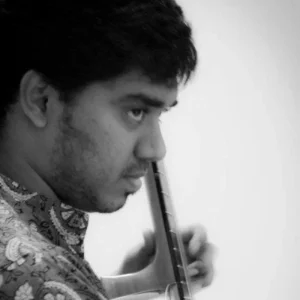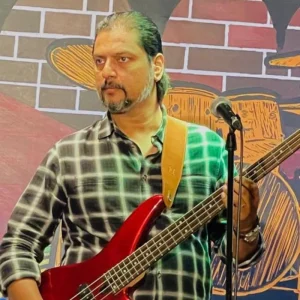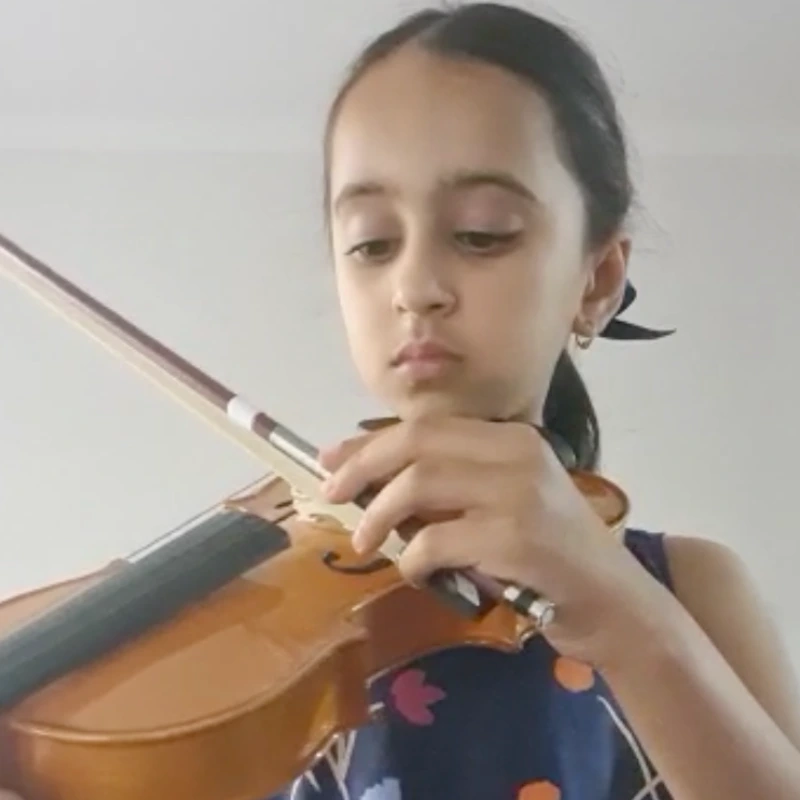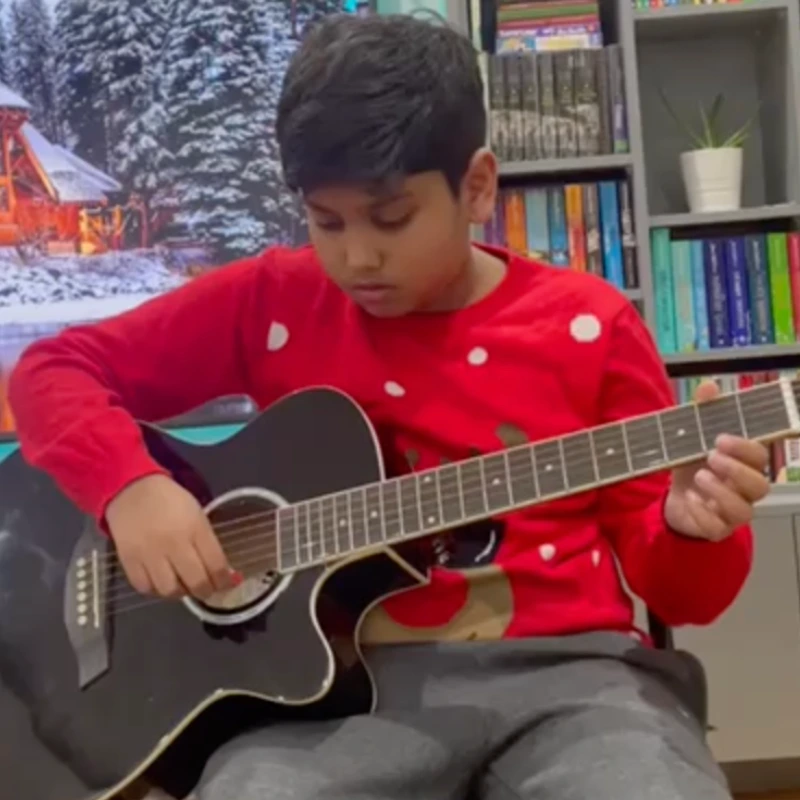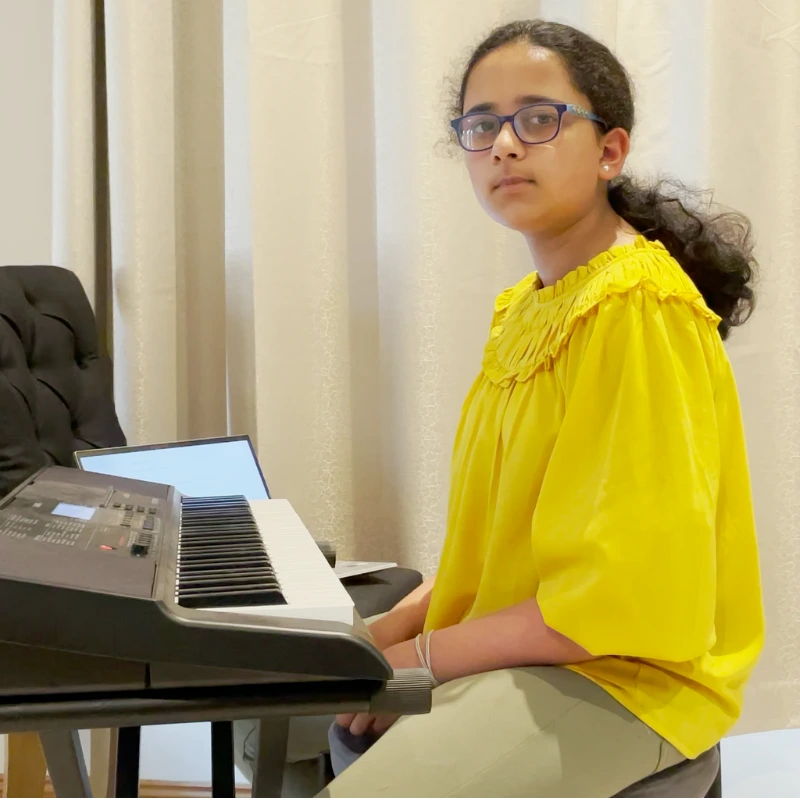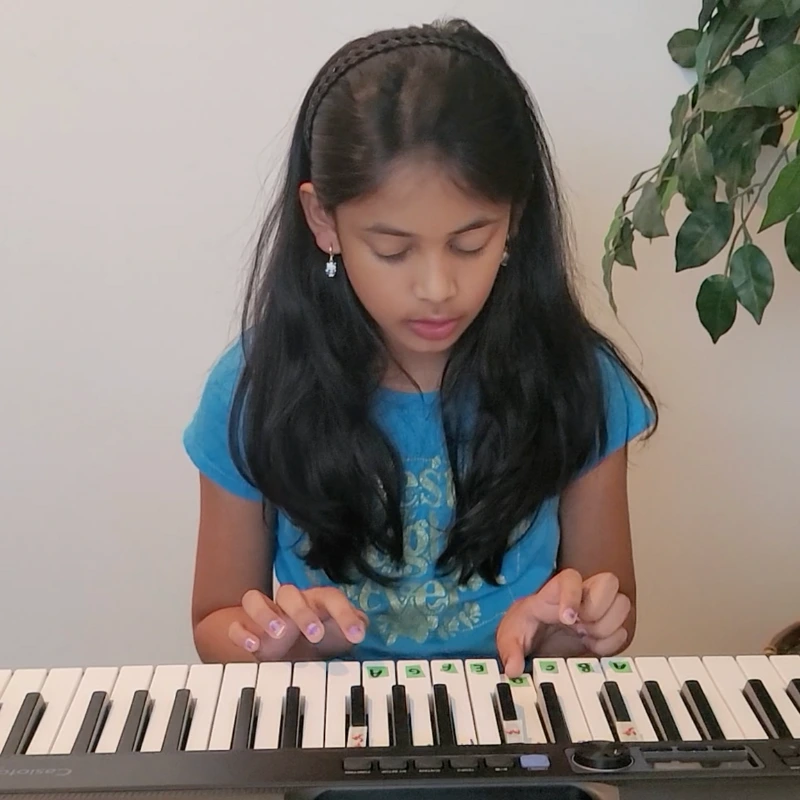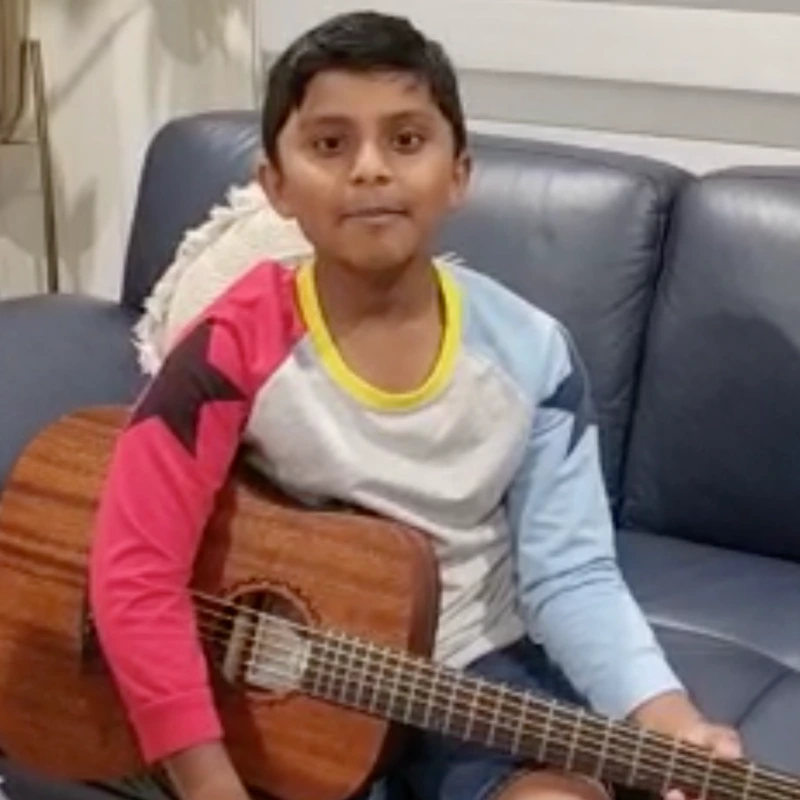The significance of the verb “Rhythm” is the repeating quality in its nature. Rhythm can be seen in almost everything in life, from living to nonliving things. Rhythm in music can also be seen. It can be viewed as one of the most fundamental parts of our livelihood. To begin with, think of the respiratory system to heart beating, think of chewing the food to the mechanism of walking, the whole caboodle has rhythm in it.
Rhythm is the most essential and basic elements of music. With that being said, it is a vast subject with so many interesting concepts to learn. This content will help you understand about the basic elements of Rhythm in Music, Different types of Rhythm patterns, How rhythm creates emotions in music, rhythmic exercises for musicians, tips to counting and keeping time in music, finally, some ideas to improve your sense of rhythm
Let’s Dive In!
Rhythm in Music
Rhythm can be simply defined as the pattern of strong and weak beats placed on regular or irregular pulsation. More vividly, it consists of sounds(notes) and silences(rests) in repeating patterns.
I read somewhere that rhythm is closely related to understanding or conception of time by an individual. The concept of rhythm varies from musician to musician. It doesn’t belong to just Music, but Poetry, dance and other forms of art use Rhythm.
Lets know about a few basic elements of rhythm in music.
Rhythm 101: Basic elements of Rhythm in Music
Notes and Its Beats
Rhythm 101 can easily be started with the basic notes and their note values/beats. It’s common to have a slight confusion with the words rhythm and beats. Well! Beats are the pulsating component of rhythm while rhythm is a pattern of notes and rests.
In short, musical note denotes the number of beats to be sung or played on an instrument and it one of the basic elements of rhythm in music.
Basic Notes to Remember
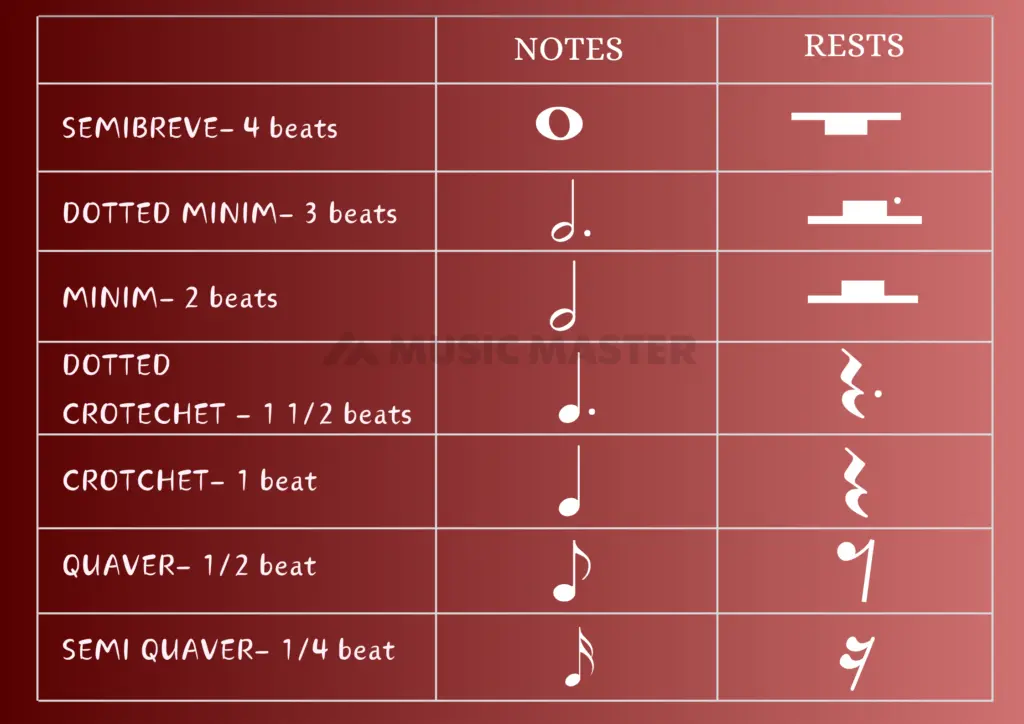
There are about seven basic notes that every musician should know. As shown above in the table, all the notes have their rests. For instance, Crotchet’s note value (number of beats it has) is beat and a Crotchet Rest’s note value is 1 beat as well. The meaning of this is that when you see a crotchet note on a music sheet, it needs to be sung for one beat and when you see a crotchet rest, it needs to be paused(silenced) for one beat. This procedure goes for all the notes shown and not shown in the table above. Basically, understanding the breaking down and grouping the notes is the first step towards understanding rhythm in music

Hot tip.
Musical notes can be arranged and modified in a variety of rhythmic patterns.
Time Signatures
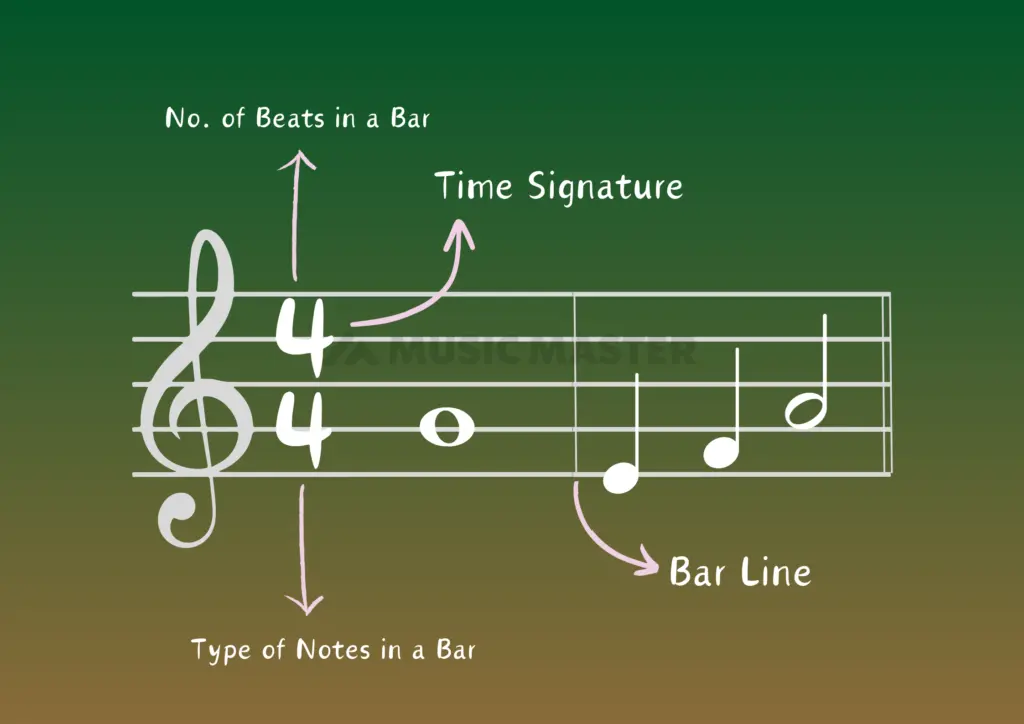
The next and essential one of the basic elements of rhythm in music is the time signature. This is a concept in Music Theory which discloses how many beats and kinds of notes are written in a measure. Time Signatures are in the form of fractions. The denominator tells us the number of Beats and the numerator tell us the kind of note used. Moreover, Knowing time signatures is an excellent way of counting and keeping time in music.
Find a table of duple, triple and quadruple times explained in the table below. To sum up, Time signatures play a vital role in determining different types of rhythmic patterns
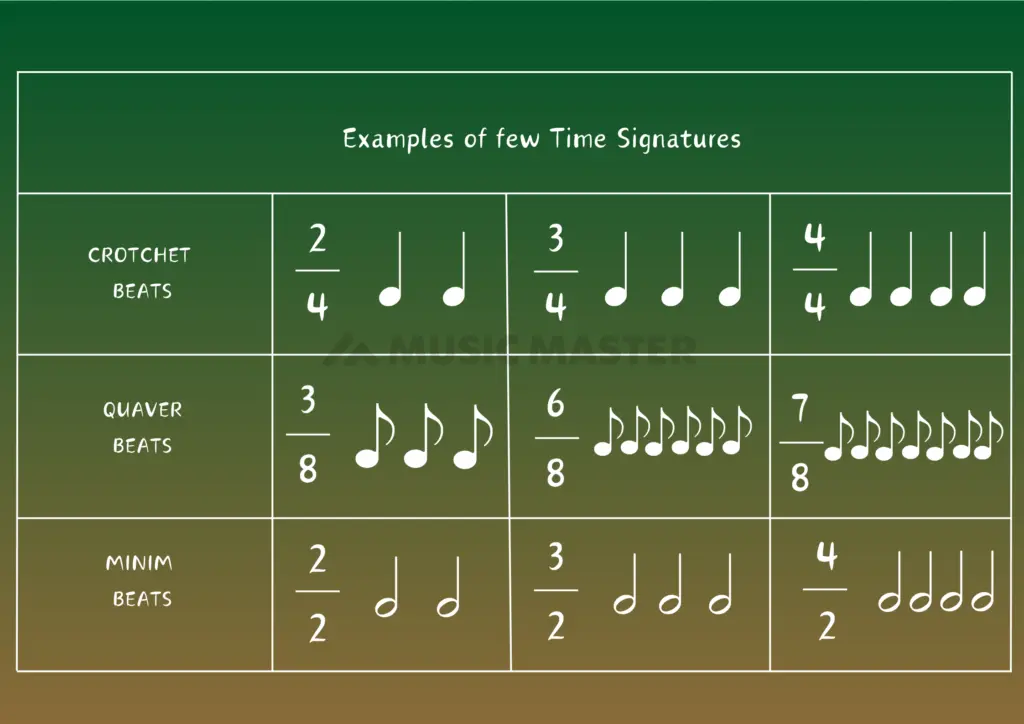

Hot Tip
4/4 is also called a common time and 2/2 is called the cut time or Alle Breve
Meter in Music
Meter in music is not necessarily made audible or has sounds like a rhythm. It is a recurring pattern with accents that is put on the beats of a time signature. Different meter choices may significantly affect the overall sound of a song since they kind of draw out different emotions and moods in listeners.

Did You Know?
The concept of Meter in music was taken over from poetry where meter in poetry denotes the number of phrases per line, syllables per word etc.,
Like I said, Meter is a series or arrangement of strong beats and weak beats.
Accentuation: Strong beats & Weak beats
In any time signature, certain beats are emphasized and stressed over and this concept is known as accentuation. It is shown by adding a ‘lesser than (>)’ symbol marked above the notes, beats or even chords.
Certain beats in your music are characteristically more important than the other beats in a time signature. The important beats are called called strong and the rest weak beats.
The initial beat is powerful in any time signature. The initial beat will sound a little stronger and more powerful than the other beats.
For instance, there are three beats per bar in a 3/4 time signature. The first beat of the three is the strong beat and the second and third beats are the weak beats.
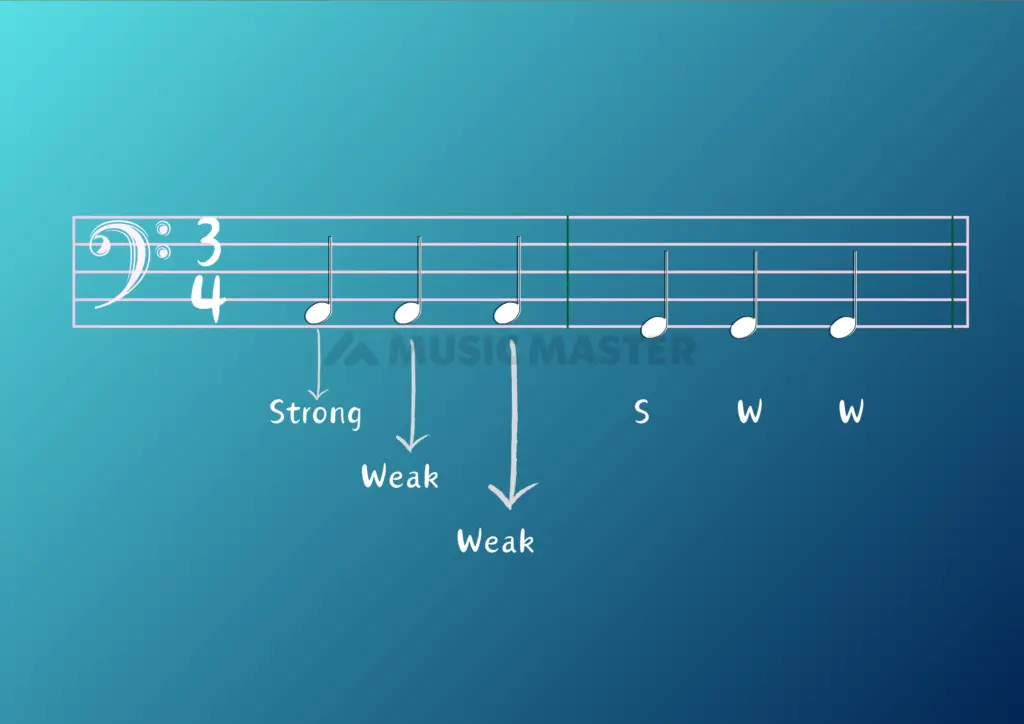
But this is not the instance for every other time signature. In the case of 4/4, the first and the third beats are the strong beats and the second and the fourth beats are the weak beats
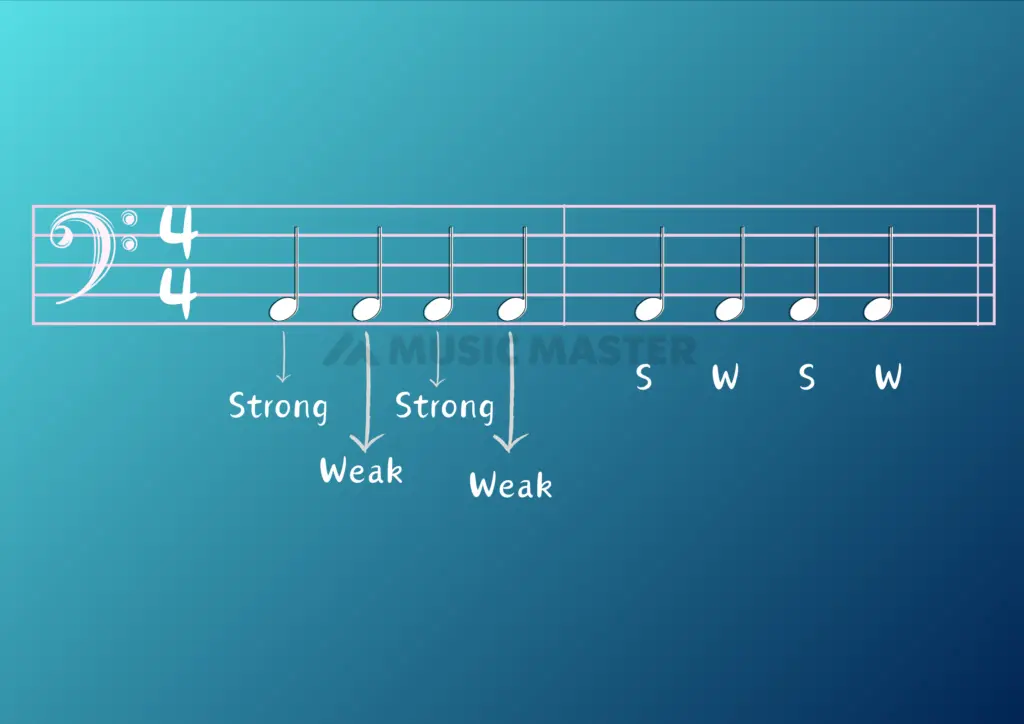
In conclusion, to understand this concept, we should most definitely look into Syncopation.
Syncopation: tempo, beat, and meter explained
There is a concept in music where the offbeats are highlighted or accented, known as syncopation. As a result, syncopation does not follow the regular rules of rhythm- strong beats and beats. In contrast, it emphasizes the weak beats upbeats rather than strong downbeats that are not usually accented. Generally, a syncopated rhythm is one of the different types of Rhythmic patterns in Music.
For example, generally, in the ¾ time, the first beats are accented. Accenting any of the rest of the beats can be known as syncopated rhythm.
There are four types of syncopation.
- Suspension Syncopation: suspension of strong beats over weak beats
- Missed Beat Syncopation: removing a beat and adding a rest instead of a missed beat.
- Off Beat Syncopation: adding accent to beats between numbered beats.
- Even Note Syncopation: Accenting on the even numbered beats of a time signature
Tempo
Tempo refers to the speed in which we sing or play a particular piece of music. In fact, It is one of the essential and basic elements of music. Tempo of any music is measured by means of BPM which expands to Beats Per Minute. Generally, tempo does have a part to play in how rhythm creates emotions in music.

Did You Know?
Tempo is a term derived from Italian language, meaning ‘Time’
Here is a list of common terms of tempos used in music
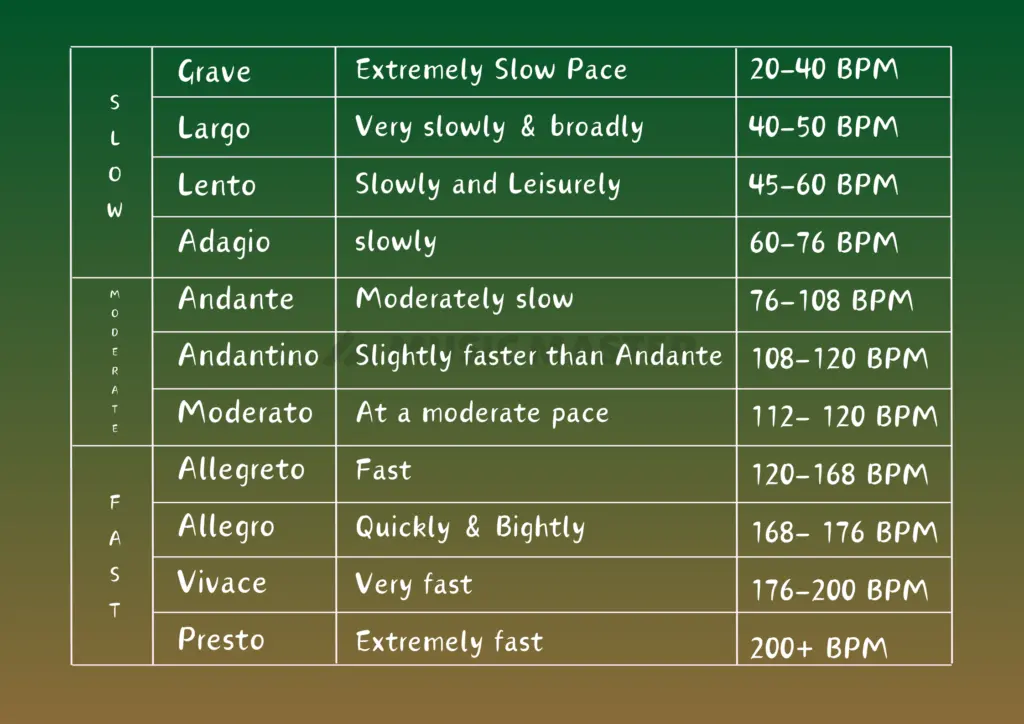
Different Types of Rhythmic Patterns:
So far we’ve read about how rhythm is formed in music, and now, let’s look at a few common and different types of Rhythmic patterns in Music. There are quite a few methods musicians usually use to create rhythmic patterns. It all depends on spacing notes and rests.
Different types of Rhythmic patterns are as follows.
Regular Rhythm:
We are starting with Regular rhythm which means the rhythm pattern has a regular flow. It has the same pattern repeating all over again. The entire piece of music will have the same loop in repeat mode. Regular rhythms are said to have a monotonous sound and sometimes listeners get bored easily.
Random Rhythm:
So, Random rhythm means the rhythm pattern has a random flow. The basic elements of this rhythmic pattern is that, it has no specific routine. You may get some sort of messy feeling while listening to random rhythmic patterns.
Progressive Rhythm:
Just like its name, the elements or characters of this type of rhythmic pattern progresses until it reaches an anticlimactic point in a piece of music. Little to contrast components are added on each repetition to make this pattern sound interesting.
Alternating Rhythm:
Alternating rhythmic patterns are not monotonous and so, it has two or more regular rhythms. This is a very good idea to escape the repetitive sound.
Is it true that rhythm creates emotions in music?
Apart from all these technicalities, our brains sort of analyze and understand sounds, beats and other elements in a song. Rhythm plays a very significant part in setting the mood of a musical piece since it sets the tempo and pace of it. Generally, rhythms add a certain level of emotions to music. Best example would be background music that plays in a movie.
If you notice very carefully, our heart rates or the pace of the activity we are doing while listening to hard and fast beats. It’s because our brains are programmed to react to rhythmic patterns. We would automatically ease ourselves while listening to slow and warm beats.
Improve your Rhythmic skills
- Some things get better with practice. Deeper understanding and exposure to a few exercises can help you improve your sense of rhythm.
- Get into the habit of using metronome while practicing singing or any instrument. This habit has proven to increase the practice of counting and keeping time in Music.
- So, little bit of theoretical knowledge in grouping notes and rests can help you tons to improve your sense of rhythm and time.
- This one tip is extremely easy. Basically, all you need to do is feel the beat and start moving your body like nodding to the rhythm or clapping. There! You’ve found the basic element of rhythm- beat.
- You can record yourself singing or play a particular piece of rhythm and then listen to it and correct it.
Closing Thoughts
You have it! That’s the end of Rhythm basics. To sum up, No concept in music can be difficult if you understand its core principles. Then it’s a piece of cake! However,I would always recommend that learning right with guidance is better. Go ahead and book a free demo with us MUSICMASTER. Happy Learning!
FAQs
1. What are the basic elements of rhythm in music?
The basic elements of rhythm includes beats, notes, time signature, syncopation,meter, tempo etc.,
2. What are different types of rhythmic patterns?
The different types of rhythmic patterns: Regular rhythm, Random rhythm, Flowing rhythm, Alternative rhythm and Progressive rhythm.
3. How does rhythm create and influence emotions in music?
Rhythm creates and influences emotions in music by setting the pace and tempo of a piece of music.
4. How can I improve my sense of rhythm?
You can improve your sense of rhythm by understanding the basic elements of rhythm and exposing yourself to a few theoretical exercises.
5. How do tempo, beat, and meter work together?
Tempo, beat and meter work together by creating the pulse in music.

